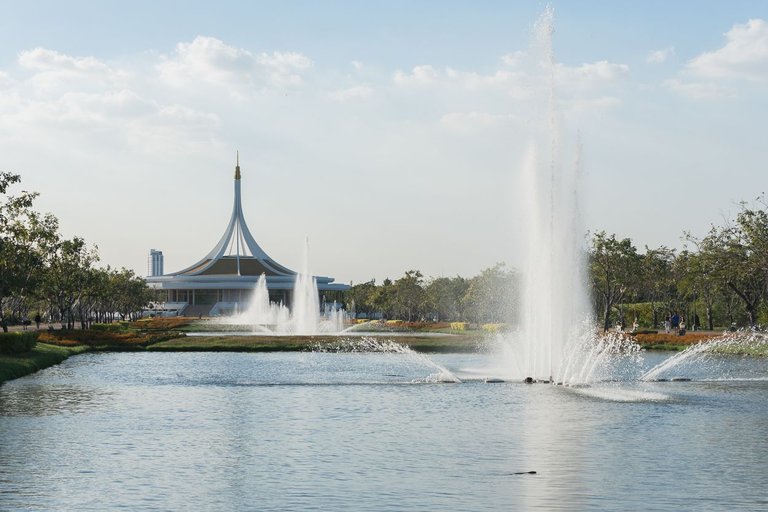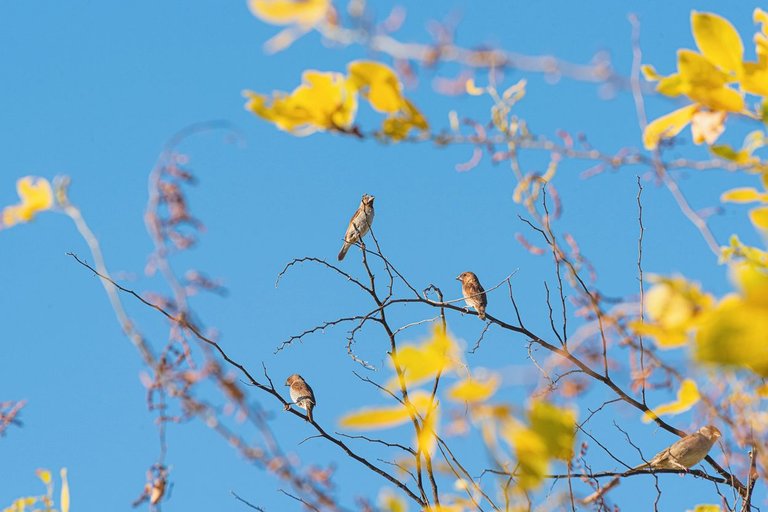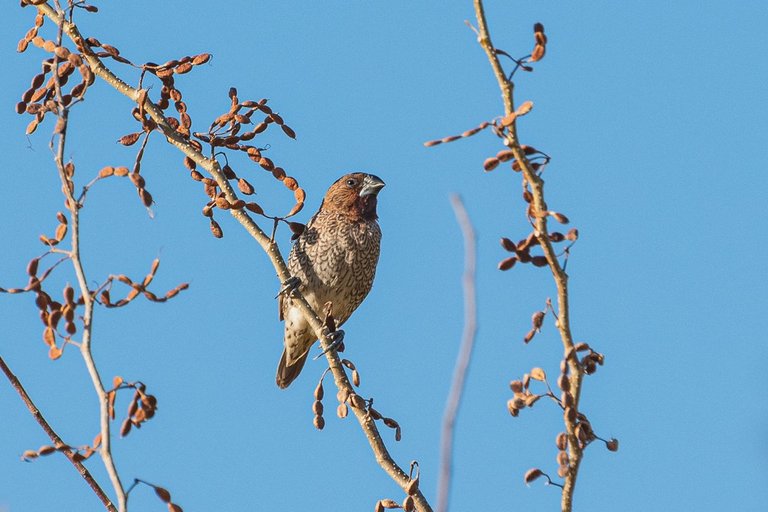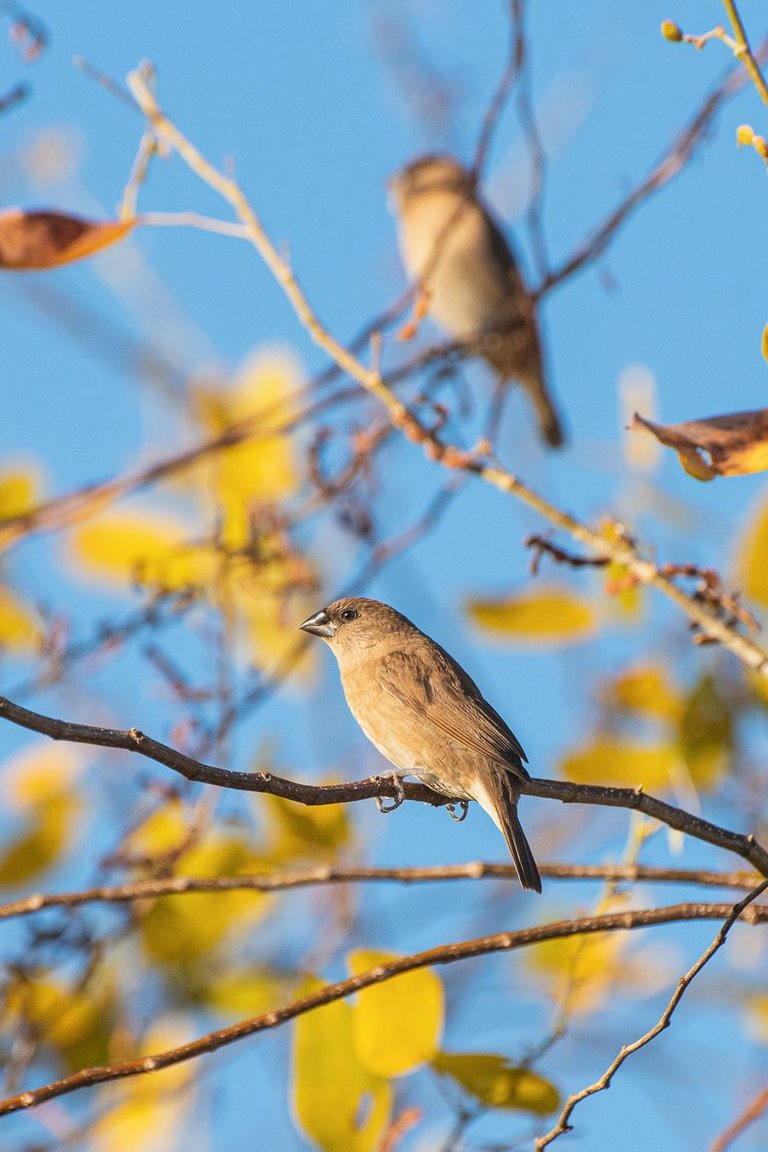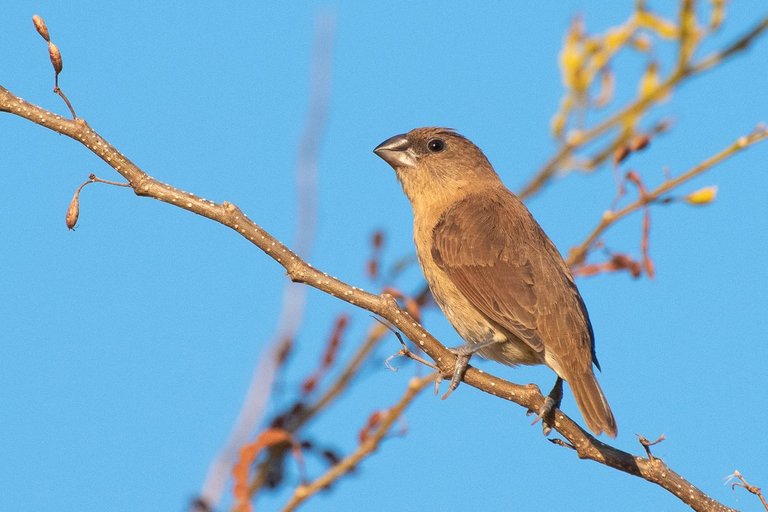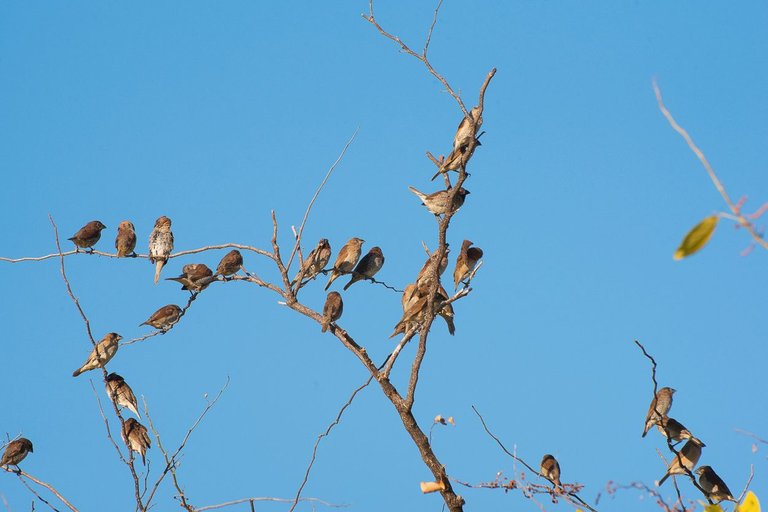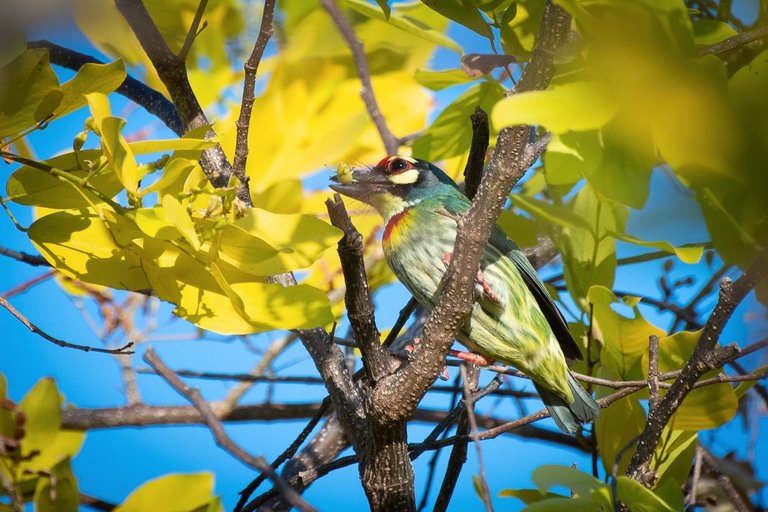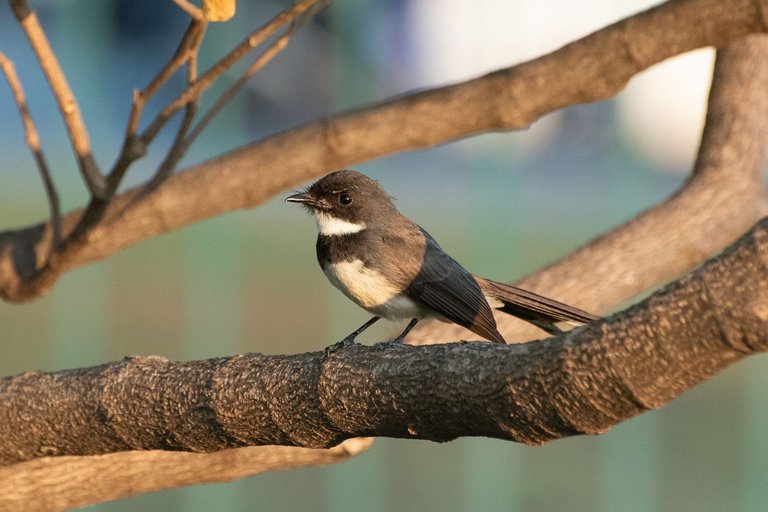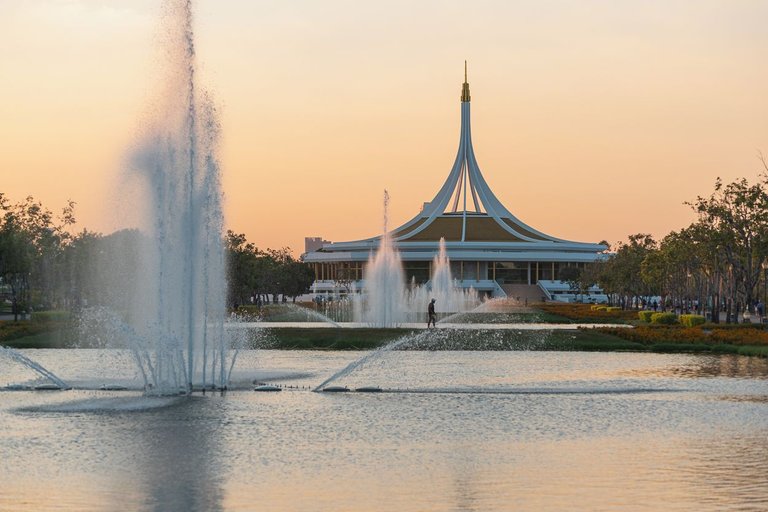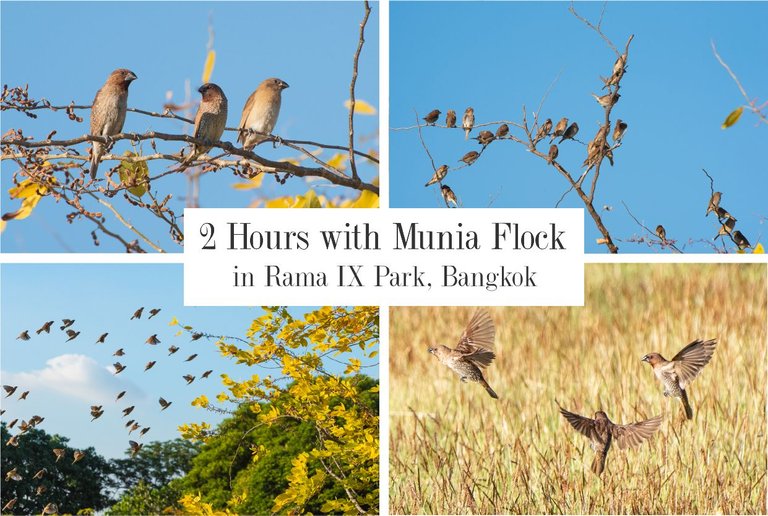
Birding is quite about luck. Most birds don't like Bangkok midday heat, and the light usually isn't great for photography at that time. I only have a short period between 4:00 and 5:30 pm before the sun disappears behind trees or buildings. But interesting birds don't appear at the snap of a finger. Once, I came to a place where openbills are usual. I saw no openbills that day. Etc. But on December 21 2023, I was lucky.
I arrived to Rama 9 Park at 4:30 pm, too late, but "no problem, I just need to hang out outdoors to recover after so much time in the Web", I thought.
Then, I saw a group of sparrows and unwillingly approached them, thinking "taking images of sparrows in the tropics? but ok, I just want to be outdoors". When I was closer, I discovered those birds weren't actually sparrows.
I didn't need to access the Web to identify the bird. I had taken a couple of images of this species and had found the name. It's called scaly-breasted munia (Lonchura punctulata), a brown sparrow-sized bird with the massive beak and the pattern of fish scales on the breast.
The color of these birds is modest but the scale pattern is cool and their seed-cracking beaks are fun so the garb looks stylish. The bird has perky, curious eyes, which makes it look charming.
There were many birds in the flock which had no scaly breast.
I supposed they were females.
But subsequent research showed they are immature individuals.
And these "plucked" ones, thus, are probably in transition to the scaly garb.
The behavior is also sparrow-like but they form bigger flocks. I counted 53 birds on one of my images. So, probably, the whole flock was 60 or 70 birds.
The flock doesn't fly as one but rather flows from one place to another: from a tree to a lawn and, then, to another tree.
Seeds on these “autumn” bushes were ripe, munias ate them. But the real excitement they had was caused by the grass, which was replete with seeds. As I walked along it, photographing birds, these seeds kept filling my sandals. So, I was harvesting either together with the birds. 🙂
Another difference between Munia birds and sparrows is that munias like sitting very close to each other. They often form clusters on branches that can droop under their weight.
On the Web, they say munias' flock sometimes contain other species of munia. It means they are open to cooperation with other animals. That probable explain how a lone sparrow had appeared in the flock I was observing:
This image is an entry for Show Me a Photo Birding Contest with the Prompt Single
I also photographed a sparrow among the munias during their raid into the grass. Was it the same individual or another sparrow, I can't say...
So, adorable species!
During this 2-hour photo session, I encountered some other birds. I saw openbills, floating in the sky, a waterhen, lurking in the canal-side vegetation, and an egret, hunting in the canal.
A coppersmith barbet with a beetle in the beak was so stunned by the flock of 70 birds that was landing onto his tree that he simply did not notice the approaching person with the camera:
Fantails care not much about people walking around them:
Love their angry brows! 😀
I just wanted to spend a couple of hours outdoors but Lady Luck smiled on me and practically dumped a basket of birds on my head. 🙂 But I am especially grateful, of course, for the munia, because I had never had the opportunity to watch a flock of this species before, and for such a long time. 🙂
More images and stories from Southeast Asia are ahead! Check out the previous ones on my personal Pinmapple map.
I took the images with a Nikkor 70-300mm on Nikon D750 on December 21, 2023 at Suan Luang King Rama IX Park, Bangkok, Thailand.
